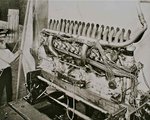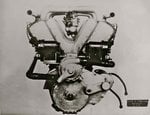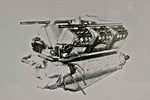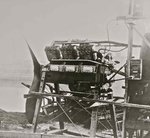davparlr
Senior Master Sergeant
I have been an admirer of the engineering that went into the Deusenberg automobile engines and have wondered what could have been the results of Lycoming, or someone else, building a V-12 aircraft version of their Deusenberg designed six. Yes, I know they failed in there own attempts at high performance aircraft engines but I don't think Deusenberg was involved in this effort. Here are a few comparison with contemporary 1928-29 engines starting with the Duesenberg SSJ supercharged engine (as are the other engines listed).
Duesenberg SSJ car
Straight six
Displacement (CID) 420 cubic inches
Hp 400 @ 5000 rpm
Valve train dual OHC, four valves per cylinder
Power to displacement (P/D) .95
Mercedes Benz SSK car
Straight six
CID 433
Hp 295
Valve train Single OHC
P/D .68
Jumo 210 L10
Inverted V12
CID 1202
Hp 600
Valve train Single OHC three valves/cyl
P/D .5
DB 600
Inverted V12
CID 2070
Hp 1000
Valve train Single OHC four valves/cyl.
P/D .48
RR Kestrel
V12
CID 1295
Hp 686
Valve train OHC four valves/cyl.
P/D .52
RR Merlin
V12
CID 1650
Hp 950
Valve train Dual OHC four valves/cyl.
P/D .58
Allison
V12
CID 1710
Hp 1070
Valve train OHC four valves/cyl.
P/D .63
The Duesenberg brothers were undoubtedly two of the most gifted automobile and engine designers in the world at that time, having their cars set a world's speed record, winning at Le Mans and having several Indy 500 victories. In the late 20s and early thirties, very few, if any engines could approach their engine performance per cubic inch, not even the vaunted Mercedes Benz SSK. I've always wondered what would have been the results if they had turned their talents to aircraft engines starting with a V12 version of their straight six which could have had better power than the Kestrel and Jumo, and approaching the Merlin and DB at a much reduced size. Of course, they would probably want to increase the size to maybe 1200 CID.
Duesenberg SSJ car
Straight six
Displacement (CID) 420 cubic inches
Hp 400 @ 5000 rpm
Valve train dual OHC, four valves per cylinder
Power to displacement (P/D) .95
Mercedes Benz SSK car
Straight six
CID 433
Hp 295
Valve train Single OHC
P/D .68
Jumo 210 L10
Inverted V12
CID 1202
Hp 600
Valve train Single OHC three valves/cyl
P/D .5
DB 600
Inverted V12
CID 2070
Hp 1000
Valve train Single OHC four valves/cyl.
P/D .48
RR Kestrel
V12
CID 1295
Hp 686
Valve train OHC four valves/cyl.
P/D .52
RR Merlin
V12
CID 1650
Hp 950
Valve train Dual OHC four valves/cyl.
P/D .58
Allison
V12
CID 1710
Hp 1070
Valve train OHC four valves/cyl.
P/D .63
The Duesenberg brothers were undoubtedly two of the most gifted automobile and engine designers in the world at that time, having their cars set a world's speed record, winning at Le Mans and having several Indy 500 victories. In the late 20s and early thirties, very few, if any engines could approach their engine performance per cubic inch, not even the vaunted Mercedes Benz SSK. I've always wondered what would have been the results if they had turned their talents to aircraft engines starting with a V12 version of their straight six which could have had better power than the Kestrel and Jumo, and approaching the Merlin and DB at a much reduced size. Of course, they would probably want to increase the size to maybe 1200 CID.




